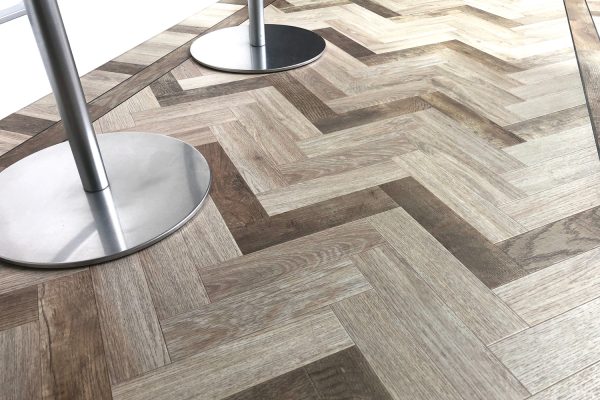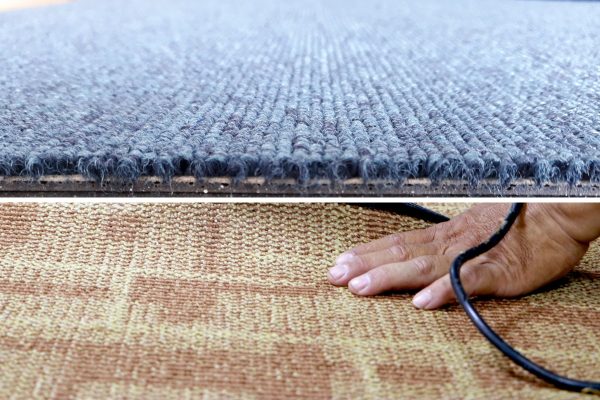Installing a carpet is a job that can be done yourself, but the process isn't entirely as easy at looks. Sometimes, getting the carpet to stick on the tack strip is a struggle, which is why we've looked into this issue and in this post, we'll be sharing some tips and tricks to make carpet installation easy.
Carpet tacks are used to grip the carpet and hold it in place on top of the subfloor. If the carpet is not sticking to the tack strip, this is often caused by the carpet not being stretched properly, or the carpet tack improperly installed. Heavy pile carpeting might require additional tack strip rows.
Carpet installation can be a little challenging in the beginning, but it definitely isn't an impossible task. In this post, we'll be listing down tips and tricks to get your carpet to hold properly during installation, so keep reading to learn more about it.
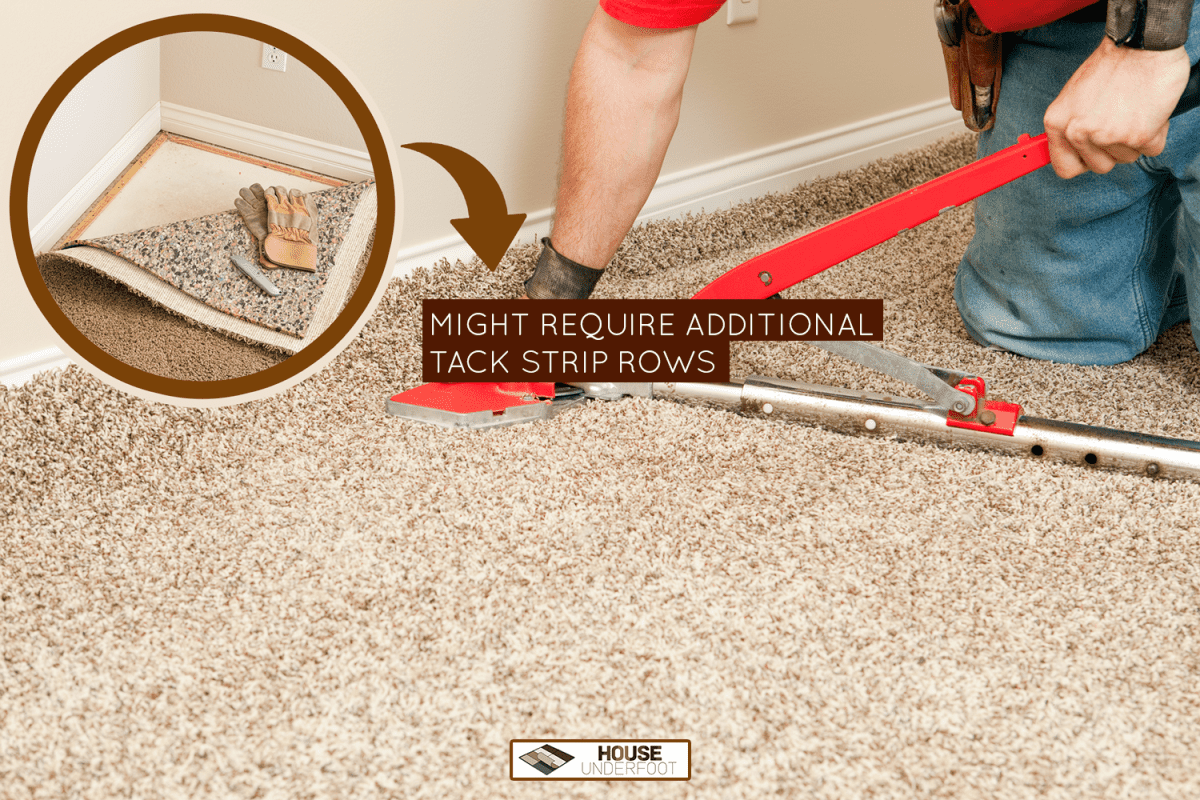
Why Is My Carpet Not Sticking To The Tack Strip?
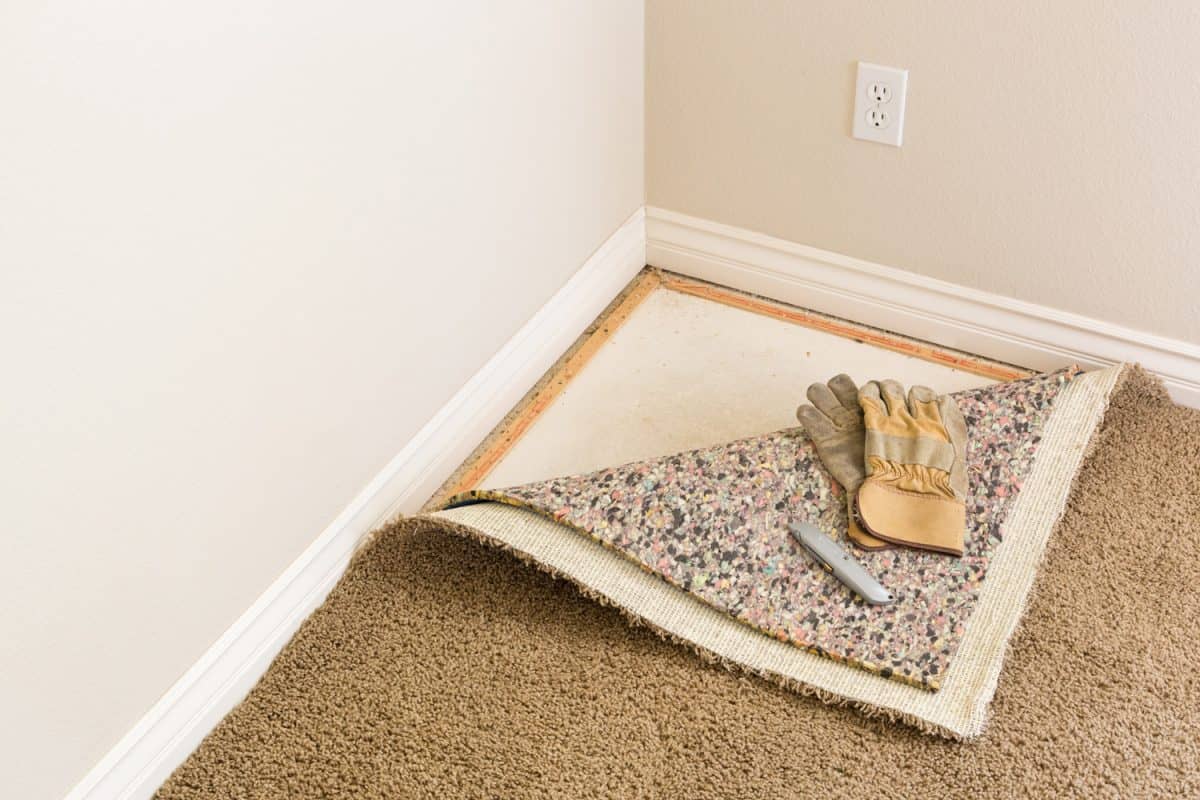
Wall-to-wall carpeted floors are a great choice for many homes because it provides comfort and functionality to a room. For some homes, it's great for kids rooms, living rooms, and bedrooms because it gives warmth and it helps reduce the noise in the room.
Carpet installation is typically done by professionals, but if you're keen on doing it yourself, you definitely can. Unfortunately, one of the problems you might face when doing your own carpet installation is getting it to stick on your tack strip.
One of the many reasons why this is happening is that your carpet might be cut too short for your tack strip. Even if you stretch the carpet to its limits, the amount of carpet might not be enough to catch on the tacks on the edges of the strip.
Another reason why your carpet may not be sticking is because of improper installation. Sometimes, the type of carpet being used needs an extra set of carpet tack strips so that it has something to hold on to.
Before installing your own carpet, make sure that you have measured the room and the amount of carpet that you will be using for the space. If you are unsure how to do this, there are carpet calculators that can help give you an estimate of the size that you need, as well as the cost of the carpets.
Get this textured carpet on Home Depot.
How Do I Stick My Carpet To The Tack Strip?
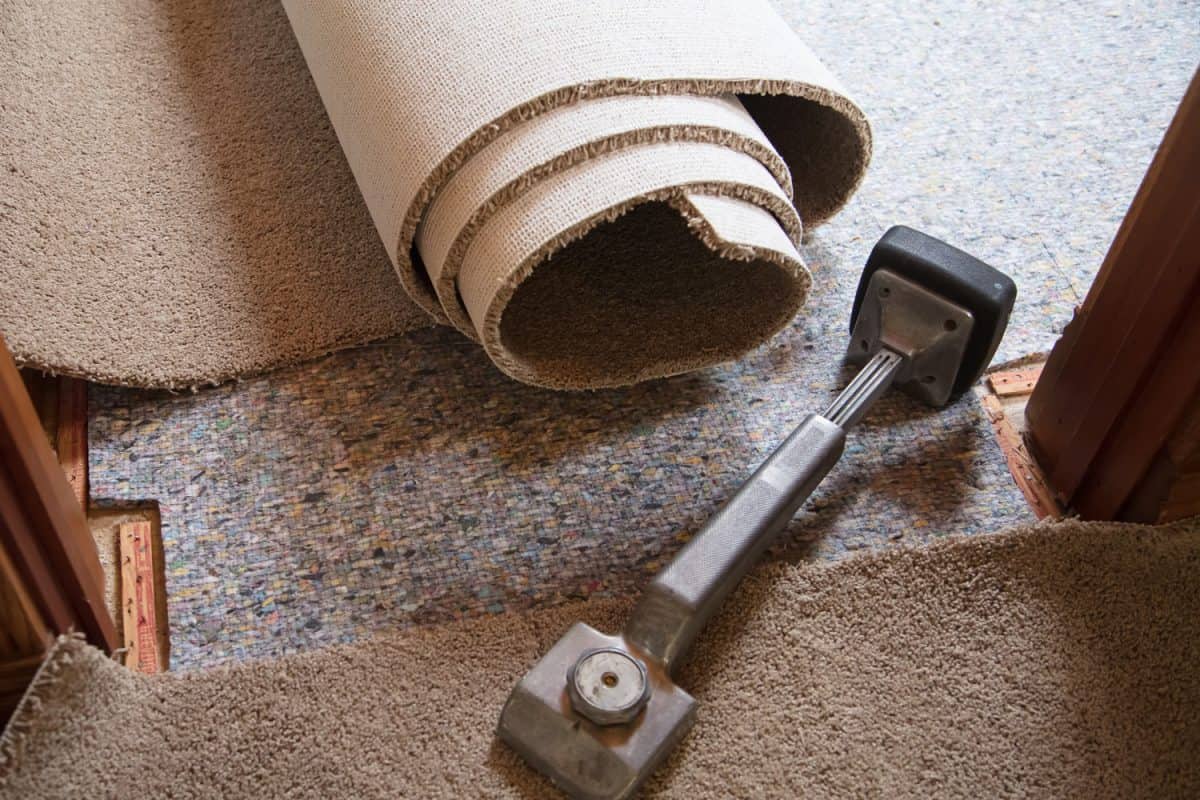
Now that you've figured out the possibilities as to why your carpets aren't sticking to your tack strips, it's time to tackle them correctly. Knowing which issue is keeping your carpet from holding on the tack strips, we should be able to find each solution.
Stretching the Carpet
If your carpet is short, the easy way would be to try and stretch the carpet until it catches on your carpet tack strips. Most of the time, you can get away with stretching as far as it can go, although it might be harder for you to tuck the edges underneath the baseboard.
Try this knee kicker, available at Amazon.
However, if the carpet is too short and it is still too far from the carpet tack strips even if you've used a knee kicker and a stretcher, cutting new carpet might be the only option. It's highly likely that you'll only have to cut just a part of your carpet and you can attach adjoining carpet pieces using seaming tape.
Properly Install Tack Strips
Improper installation of the tack strips itself can also give you problems. When attaching the tack strips on the floor, the sharp points of the tack strips should be pointing outwards towards the walls. This will grip the stretched carpet in place.
Most carpets with short or medium piles can do well with one row of tack strips. However, heavier piles like heavy-woven Berbers and woolen carpets need an extra row of tack strips to hold on to. Make sure to install two rows of carpet tack strips so they have more teeth that will grip on the carpet.
How To Install A Carpet
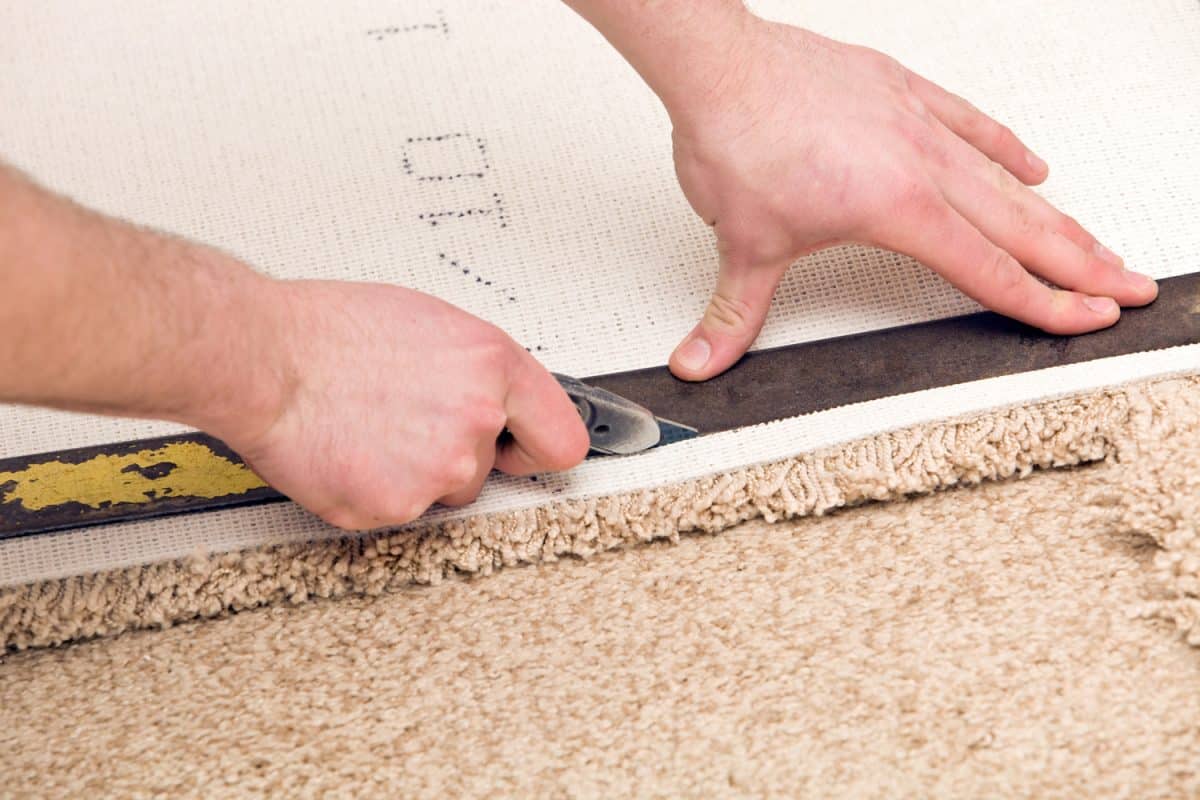
The process of installing carpet in your own home isn't that difficult, but there are a lot of tools that you will need to finish the job. Most of them can be rented, but you can also find these at your local hardware store.
Materials Needed:
- Measuring tape
- Carpet tack strips
- Hammer
- Hand saw
- Carpet
- Carpet padding
- Carpet knife
- Masking tape
- Staple gun or staple hammer tacker
- Heat activated seaming tape
- Carpet seaming iron
- Carpet tucker
- Carpet knee kicker
- Carpet stretcher
Instructions:
1. Measure and Clean Up
Using a measuring tape, take the measurements of your room and use a carpet calculator to give you an estimate of how much carpet you should buy. Make sure to take accurate measurements of the room, namely the length and width.
If the room is not a perfect square or rectangular, take measurements of the room in sections. Add these values together to get the total square footage of your room. Order your carpet and carpet padding using these measurements, give or take with a little extra for you to work with.
Before installing the carpet, remove all furniture and old floor coverings in the room. Make sure to thoroughly sweep and vacuum the floor, and check if there is any damage that should be repaired before installation.
2. Install the Carpet Tack Strips
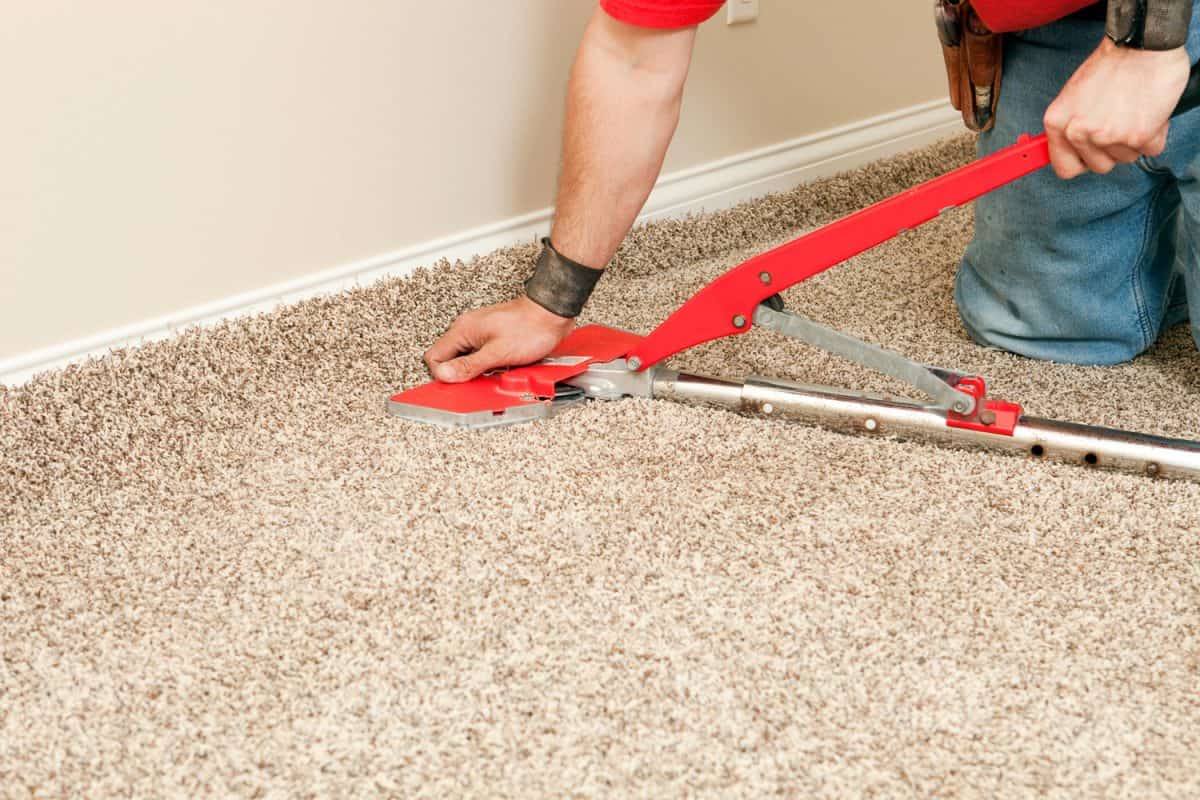
Cover the subfloor with your carpet padding. Cut your padding according to size using the carpet knife and tape adjoining pieces using masking tape. Fasten the padding using a staple hammer tacker or gun, or use carpet adhesive if you are putting it on a concrete floor.
Get this carpet padding from Lowe's.
When the carpet padding is laid out perfectly, nail down the carpet tack strips along the perimeter of the room. Use a handsaw to cut the tack strips to size. Make sure to leave a 1/2-inch space between the baseboard and the tack strips to allow space for tucking the carpet underneath the molding.
Check out this carpet tack strip on Amazon.
If you are using a high pile or heavily woven carpet, make sure to install two rows of carpet tack strips around the perimeter of your room.
3. Stretch the Carpet
Unroll your carpet on top of the padding. Make sure to orient your carpet correctly if it has patterns or texture. Using a carpet knee kicker to force the carpet into position against the first wall. Slowly move along the wall and strike the knee kicker until you've stretched out the carpet so it doesn't have wrinkles and slack.
See this carpet stretcher on Amazon.
Switch to a carpet stretcher and use it to pull your carpet tightly towards the wall. Press the carpet firmly onto the spikes of the carpet tack strips, making sure that the carpet overlaps to the wall by a few inches (3 inches of extra carpet should do.)
4. Trim the Edges and Tuck the Carpet
With a carpet edger, trim the carpet flush tight against the baseboard of your wall. Make sure that the carpet is completely severed before pulling it away to prevent the fiber from unraveling. Use a carpet tucker to tuck the edges of the carpet under the baseboards.
Repeat the process slowly on all the walls, using the knee kicker to pull the wrinkles out while tucking the carpet. You can also use the carpet stretcher if you need more force.
5. Seam Adjoining Pieces
If you are using two or more pieces of carpet, you need to seam them together. Butt the two edges of your carpet against each other, making sure that they are not overlapping. Lift one edge of the carpet and slide a length of heat-activated seaming tape underneath it, making sure to center it on the seam.
Get this heat-activated seaming tape on Amazon.
Place the lifted carpet back in place and using a seaming iron, glide it along the seam to activate the tape and adhere the two pieces together. Make sure there is a tight fit on the seam, and use the knee kicker to push the edges in place if necessary.
Final Thoughts
When you are trying to install a carpet, make sure to double check all your materials prior to installation. This will make putting the carpets easier and hassle-free. Having a new carpet installed in your home is a great way to freshen up and add appeal to your rooms, so have fun with your new carpets!





